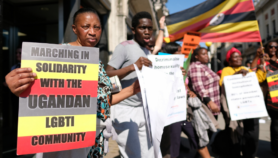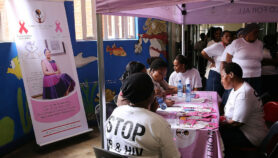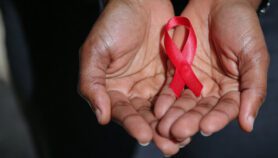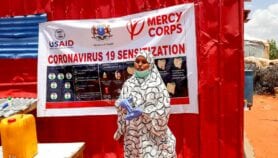19/02/21
Africa ‘not on track to reach 2030 HIV/AIDS targets’
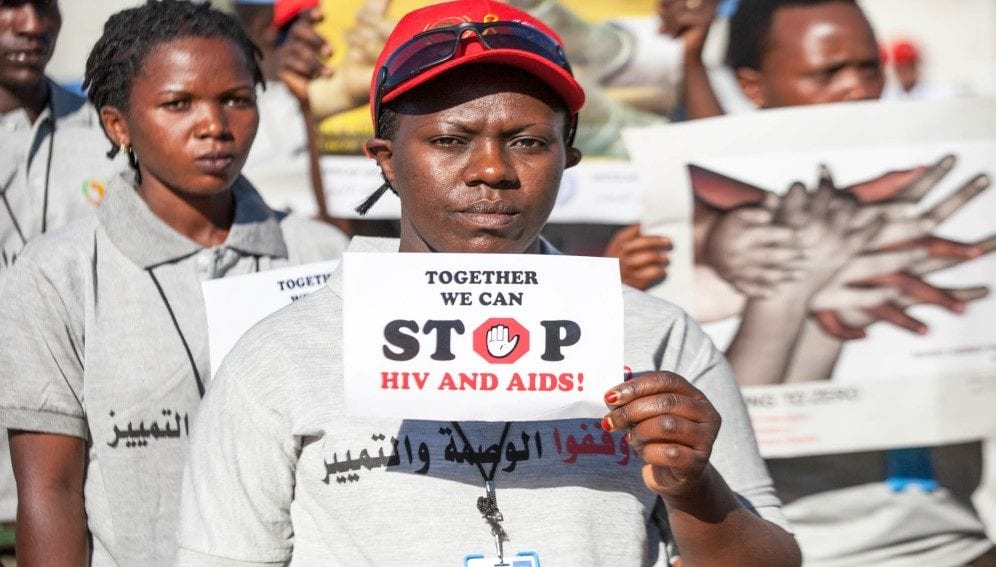
By: Ochieng’ Ogodo
Send to a friend
The details you provide on this page will not be used to send unsolicited email, and will not be sold to a 3rd party. See privacy policy.
[NAIROBI] The likelihood of African countries reaching HIV testing and condom use targets by 2030 is only 12.1 per cent and 28.5 per cent respectively, making the need for more testing and treatment a priority, a modelling study suggests.
The Joint United Nations Programme on HIV/AIDS (UNAIDS) launched ambitious targets in 2014 to end the AIDS epidemic by 2030 by achieving 95 per cent diagnosis and 95 per cent of people with HIV taking medications against the disease.
The study estimated the likelihood of 38 African countries meeting the targets using population-based method conducted from 2003 to 2018 involving 1,456,224 sexually active adults of ages 15-49 years old.
“Although many countries have upward trends in HIV testing and condom use, the annual rate of increase is too slow, and the probabilities of reaching UNAIDS targets were very low,” says Stuart Gilmour, the study’s co-author and a professor of biostatistics and bioinformatics at St. Luke’s International University, Japan.
“Although many countries have upward trends in HIV testing and condom use, the annual rate of increase is too slow.”
Stuart Gilmour, St. Luke’s International University
In 2019, there were 690,000 AIDS-related deaths and 1.7 million new infections, with young women and adolescent girls accounting for about 25 per cent of new infections in Sub-Saharan Africa despite making up about ten per cent of the population, according to UNAIDS.
The study, which was presented at the 2021 HIV Research for Prevention Conference late last month, identified seven countries with downward trends in annual HIV testing: Benin, the Congo-Brazzaville, Gambia, Ghana, Guinea, Madagascar and Sierra Leone, with Chad, Madagascar, Niger and South Sudan found to have downward trends in condom use.
But the study shows high annual HIV testing in 2030 in countries such as Eswatini (92.6 per cent), Lesotho (90.5 per cent) and Uganda (90.5 per cent). For condom use, the top three countries are Eswatini (85 per cent), Lesotho (75.6 per cent) and Namibia (75.5 per cent).
While significant progress has been made in the past decades towards the testing coverage target, this study found only a very low chance for African countries to achieve the first UNAIDS targets by 2030.
“This is important for African countries and citizens of those countries to understand, since HIV is a major health concern in Africa and it appears from our results that more needs to be done to control it,” Gilmour tells SciDev.Net. “HIV cannot be eliminated without very high coverage of testing and low levels of behavioural risk so understanding what the trends in these behaviours are is important to know whether African countries are on track to control or eliminate HIV.”
African countries need to decide how best to use their resources to fight HIV, but from an international perspective the withdrawal of overseas aid and development assistance for health targeting HIV/AIDS needs to be reconsidered, Gilmour explains.
“Attention to HIV/AIDS has been reduced over the past decade… but new efforts are going to be needed if we want to make sure that HIV is eliminated in the future,” he adds.
Linda-Gail Becker, a professor of infectious diseases at South Africa’s University of Cape Town, says that the findings indicate a bigger problem that has stalled in collective response to HIV.
“Testing and condoms are at the very foundation of the HIV response. If we aren’t on target to meet these two fundamental aspects, then there really is very great concern on many other issues like treatment and prevention targets,” she tells SciDev.Net.
Each country needs to review its own HIV situation and decide on a tailored response that impacts on new infections as well as reductions in cases and death, according to Becker.
“We still have much to do in Africa on AIDS and whilst COVID-19 has hit us all hard, we cannot afford to drop the ball on an epidemic which previously brought us to our knees,” she says.
*Correction
*An earlier version of this article indicated that the Democratic Republic of Congo (DRC) was one of the seven countries with downward trends in annual HIV testing as per news source. The news source has since clarified that whereas this study covered both the DRC and Congo-Brazzaville, the downward trend in HIV testing was observed in Congo-Brazzaville. This was corrected on 22/02/2021.
This piece was produced by SciDev.Net’s Sub-Saharan Africa English desk.







